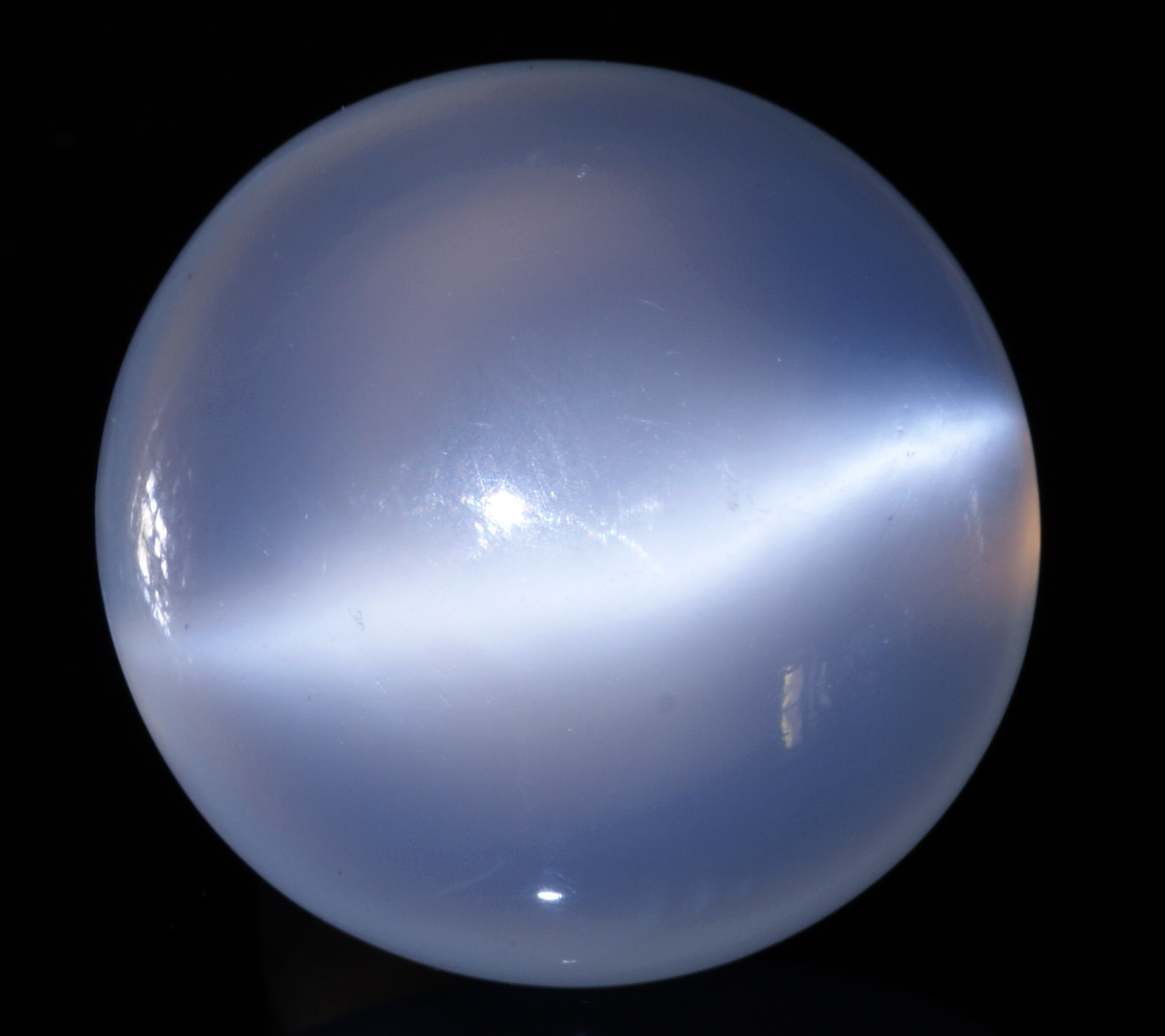Adularescence on:
[Wikipedia]
[Google]
[Amazon]
 Adularescence ( ) is an
Adularescence ( ) is an
The origins of color in minerals
" ''American Mineralogist'', vol. 63, pp. 219-229.
 Adularescence ( ) is an
Adularescence ( ) is an optical phenomenon
Optical phenomena are any observable events that result from the interaction of light and matter.
All optical phenomena coincide with quantum phenomena. Common optical phenomena are often due to the interaction of light from the Sun or Moon with ...
that is produced in gemstone
A gemstone (also called a fine gem, jewel, precious stone, semiprecious stone, or simply gem) is a piece of mineral crystal which, when cut or polished, is used to make jewellery, jewelry or other adornments. Certain Rock (geology), rocks (such ...
s like moonstone. The optical effect is similar to labradorescence and aventurescence.
Description
The effect of adularescence, also commonly referred to as ''schiller
Johann Christoph Friedrich von Schiller (, short: ; 10 November 17599 May 1805) was a German playwright, poet, philosopher and historian. Schiller is considered by most Germans to be Germany's most important classical playwright.
He was born i ...
'' or ''shiller'', is best described as a milky, bluish luster or glow originating from below the surface of the gemstone. The schiller, appearing to move as the stone is turned (or as the light source is moved), gives the impression of lunar light floating on water (accounting for moonstone's name). Though white schiller is the most common, in rarer specimens, orange or blue lusters are produced.
This effect is most typically produced by adularia
Orthoclase, or orthoclase feldspar (endmember formula potassium, Kaluminium, Alsilicon, Si3oxygen, O8), is an important Silicate minerals#Tectosilicates, tectosilicate mineral which forms igneous rock. The name is from the Ancient Greek for "stra ...
, a K-feldspar or orthoclase
Orthoclase, or orthoclase feldspar ( endmember formula K Al Si3 O8), is an important tectosilicate mineral which forms igneous rock. The name is from the Ancient Greek for "straight fracture", because its two cleavage planes are at right angles ...
(), from which the name is derived.Shipley, Robert M. (2007), ''Dictionary of Gems and Gemology'', Read Books, p. 93. Adularescence appears in numerous other gemstones, notably common opal
Opal is a hydrated amorphous form of silicon dioxide, silica (SiO2·''n''H2O); its water content may range from 3% to 21% by weight, but is usually between 6% and 10%. Due to the amorphous (chemical) physical structure, it is classified as a ...
, rose quartz and agate
Agate ( ) is a banded variety of chalcedony. Agate stones are characterized by alternating bands of different colored chalcedony and sometimes include macroscopic quartz. They are common in nature and can be found globally in a large number of d ...
. However, due to inclusions in these other stones, the effect is displayed differently. The schiller is scattered by inclusions and appears hazy; non-hazy specimens are specially referred to as "milky". Thus, adularescence occurring in non-adularia gemstones is termed differently – the "girasol effect" and opalescence
Opalescence or play of color is an optical phenomenon associated with the mineraloid gemstone opal,opalescent. 2019. In Noah Webster's 1828 American Dictionary of the English Language. Retrieved January 7, 2019, from https://1828.mshaffer.com/ ...
(for opals only) are two such terms. When the schiller forms an indistinct band, it is said to display a chatoyant effect. Only clearly defined bands are referred to as "cat's eyes".
As an optical phenomenon, adularescence exists only in the presence of light; it is a product of the interaction between light and the internal microstructures of the mineral and not a property of the mineral itself. The effect is produced by alternating layers of two types at a scale near the wavelength of light (approximately 0.5 micron
The micrometre (English in the Commonwealth of Nations, Commonwealth English as used by the International Bureau of Weights and Measures; SI symbol: μm) or micrometer (American English), also commonly known by the non-SI term micron, is a uni ...
) – this leads to light scattering and interference.Nassau, Kurt (1978).The origins of color in minerals
" ''American Mineralogist'', vol. 63, pp. 219-229.
See also
* Aventurescence * Labradorescence *Optical phenomenon
Optical phenomena are any observable events that result from the interaction of light and matter.
All optical phenomena coincide with quantum phenomena. Common optical phenomena are often due to the interaction of light from the Sun or Moon with ...
* Rainbow lattice sunstone
References
{{reflist, 1 Mineralogy Optical phenomena